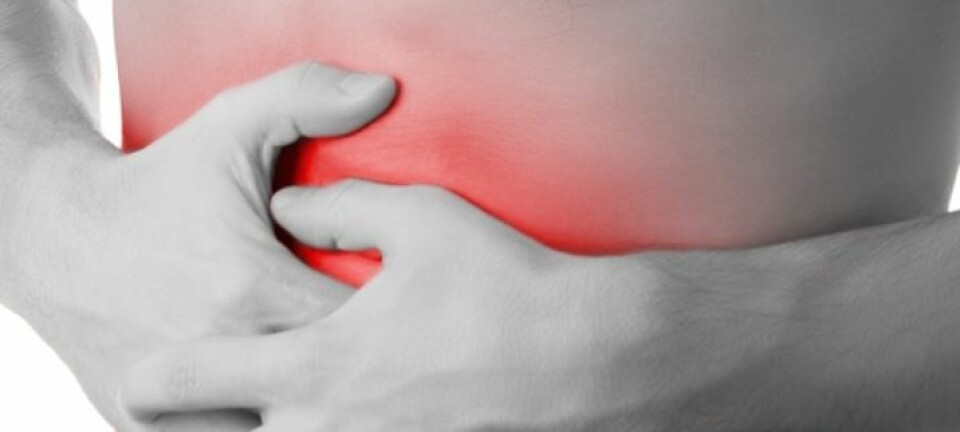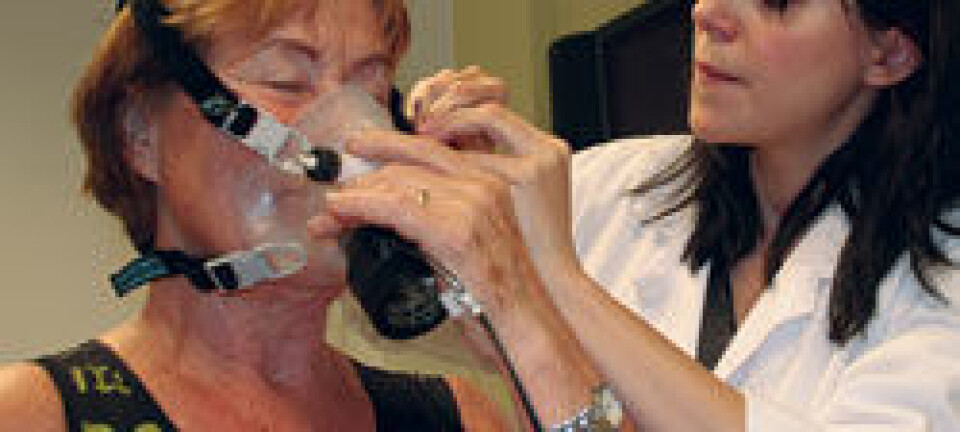
Exercise helps curb panic disorder symptoms
A regimen of three workouts a week helps reduce the symptoms of panic disorder, with effects lasting over a year. But it takes more than exercise to make a person fully psychologically fit.
Denne artikkelen er over ti år gammel og kan inneholde utdatert informasjon.
The source of this finding is a recent Norwegian doctoral dissertation that compared the effects of physical exercise with the effects of cognitive behaviour therapy among two patient groups, both suffering panic disorder.
Almost five out of every 100 Norwegians are given this diagnosis at some point in life. Women are more frequently stricken than men.
Stress and greater burdens
People with the condition have repeated panic attacks. During one of these attacks, the body prepares for an imminent crisis.
Common symptoms are a throbbing heart, the shakes, a feeling of strangulation, chest pains, dizziness, a feeling of being outside oneself as well as fears of death, fainting or going insane.

“A persistent heavy burden and lots of stress can trigger a panic attack, but one or a few of these attacks don’t automatically lead to panic disorder,” says researcher and psychologist Anders Hovland.
“Panic disorder is characterised by repeated attacks and worries about being stricken by new ones,” he says.
Hovland is head of research at the Solli District Psychiatric Centre in Nesttun, on the outskirts of Bergen.
Fear of being afraid
Cognitive behaviour therapy is known to work well as a treatment for panic disorder.
“This is the first choice for treatment. But unfortunately it isn’t always available to everyone who needs it,” says Hovland.
He is now a pioneer in studying the long-term effect of physical activity on the disorder.
“The conclusion is that physical activity over a period has a strongly beneficial effect. And it lasts for more than a year after this treatment. There was a big change with regard to fear of physical symptoms,” says Hovland.
He thinks this is significant, because the fear of symptoms is in many ways what fuels panic disorder.
Difficult situations
In Hovland’s study, 36 test subjects were split randomly into two groups. In one, 17 participants took part in coached physical exercise three times a week.
The exercise included one session to increase fitness, one to build muscle strength and one with a mixed bag of activities. These included games and exercises of a competitive nature. The idea was to get the patients involved in varied types of motion, to use their whole bodies.
The other 19 patients received cognitive behaviour therapy once a week. Both kinds of treatment lasted 12 weeks.
“Our results indicated that patients' ability to encounter situations that they saw as difficult, or situations they feared would trigger new attacks, had not improved sufficiently compared to the benefits of behaviour therapy.”
“So the patients couldn’t be considered to be healthy after the physical exercise they received at the gym,” says Hovland.
Belief in physical exercise
Nevertheless, Hovland maintains faith in exercise as a treatment for panic disorder and indicates that several psychological and biological mechanisms are at work in making physical activity curb symptoms.
Hovland has also studied how so-called heart-rate variability is associated with the way the brain treats inputs among patients with panic disorder.
“It’s well known that patients with panic disorder have less heart-rate variability than normal.”
“Pulse rates will normally vary from one situation to another, for instance when we are at rest compared to when we are excited. But for people with panic disorder, the heart rate changes less and is generally higher than normal per minute,” explains Hovland.
This appears to raise the risk of developing cardiovascular disease. If patients develop heart problems, it also has a negative effect.
Hovland says that physical activity increases heart-rate variability and has a positive effect on the brain, such as the way the brain regulates our attention.
“We will now start more research into the issue of how physical exercise can be used in combination with other forms of treatment,” says Hovland.
------------------------
Read the Norwegian version of this article at forskning.no
Translated by: Glenn Ostling
Scientific links
- Hovland, et.al. Comparing Physical Exercise in Groups to Group Cognitive Behaviour Therapy for the Treatment of Panic Disorder in a Randomized Controlled Trial. Behavioural and Cognitive Psychotherapy, 2013, 41, 408–432. Abstract
- Hovland, et.al. The relationships among heart rate variability, executive functions, and clinical variables in patients with panic disorder. International Journal of Psychophysiology 86 (2012) 269–275 Abstract



































